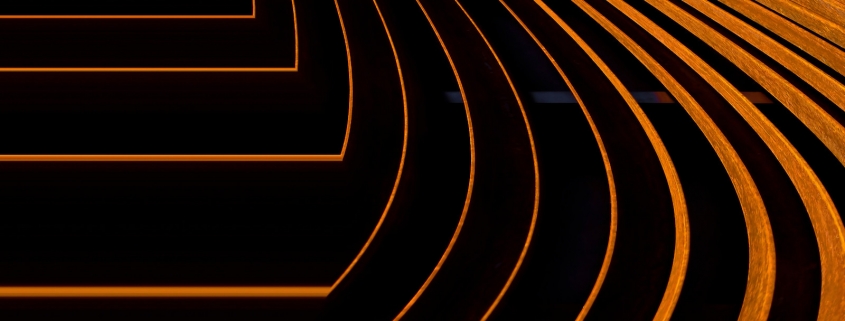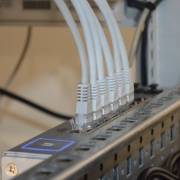Leased Line Providers in the UK
Even though we work with all of the Tier 1 network and leased line providers, we don’t often talk about it. This is due in part to our customers’ network and ethernet fibre leased line services being both commercially sensitive and a security risk should we divulge their details. It is also a relatively complex area of IT infrastructure, where one size rarely fits all and the options for Fibre Ethernet, transit, IP, backhaul and VLANs with Cloud Connect and Smart Network. Coupled with the resiliency options of leased lines makes the choices almost limitless.
Fibre Ethernet Explainer Video
What are Tier 1, Tier 2 and Tier 3 providers?
Excellent question, which as usual does not have a simplistic answer. There are Global Tier 1 providers, such as Level3, NTT, AT&T. There are partial Global Tier 1 providers, such as C&W (acquired by Vodafone), Liberty Global (who acquired Virgin Media in 2013) and Telia. The list is not exhaustive.
In the UK I’ll refer to Tier 1 providers who provide Ethernet Fibre, not to be confused with fibre broadband, to the site or premise. UK Tier 1 leased line providers include: BT, Vodafone, Colt, Virgin Media and SSE along with providers, such as KCOM, with legacy presence in specific areas.
National Tier 2 and Tier 3 providers can be described as either having to use a Tier 1 or Tier 2 for some portion of the leased line, or they have a contractual arrangement which places them in Tier 2 or Tier 3. A Tier 2 example would be ourselves, where we have a leased line provided end-to-end by a Tier 1.
In very simple terms what makes the Internet work is the Tier providers each have their own network, or portion of a network, which is private to them. Where they all meet, typically an Internet Exchange or IX, is how traffic from a source, such as a browser requesting a web page, is passed to the host provider, the server which hosts the website. This is either via Public Peering or via Private Peering between the two or more respective providers. The London Internet Exchange, LINX, is arguably the largest peering point in the UK. You can find the list of public peers at their LON1 node here: LINX LON1.
Leased lines prior to around 2002 were usually low capacity, as little a 64kbps. In the UK circuit options were available for 2mbps (E1), 34mbps (E3) 45mbps (DS3) and 155mbps (STM1). Today leased line providers ordinarily supply an Ethernet leased line circuit which is at least 100mbps, however, all our customers have at least 1000mbps which is 1gbps.
A note regarding Leased Line resilience
Ethernet leased lines in the UK usually carry at least a 99.9% Service Level Agreement. I have in the past competed with companies selling services with a single fibre carrying a 100% SLA. Which, as any budding techie will tell you, is an engineering impossibility.
The likelihood of all Tier 1 leased line providers in the UK being on-net is low. Many of the Tier 1 providers will need to use BT for the final part of the circuit. The tell-tale signs are an install fee and higher rentals on a 36 month term.
Almost all UK leased line providers make use of dedicated circuits from their competitors’ wholesale divisions as it is often cheaper for them to do this than to extend their physical networks by digging the road or pavement. There are some notable exceptions depending upon location and building, which you can learn about below.
When we quote for resilient services we:
- Inspect the internals of the site, such as the comms room.
My most memorable initial inspection was at a global brand hotel chain, at an hotel here in Birmingham. We found the ethernet fibre ingress with the comms cabinet, all of which was below the lowest point of the swimming pool it was behind. Needless to say our initial recommendation was raising the cabinet to a higher point in the building and moving the fibre ethernet ingress to suit. - Assess the external area for access routes.
This usually entails wandering around the outside of the building making measurements for where a known egress from the building lies, often looking for tell-tale signs of raised paving slabs or renewed tarmac heading off the site. - Survey the surrounding areas physically identifying a DP (demarcation point).
Once the egress from the building is identified, plus the route from the building, we then need to find the DP covers starting with the nearest. Photographs are taken and GPS location recorded. Main link routes can be identified easily enough as they ordinarily have multiple covers and will usually be found at road junctions. I always feel a little conspicuous wandering up and down roads, photographing the floor trying to contain my excitement at finding a Mercury five cover DP – that’s a big one! - Qualify identified DPs with providers.
The Tier 1 providers rarely know what they have and where it is located, so this step takes a little more time, normally relying upon the local engineers. We have a lot of contacts outside of the ‘normal’ process which enables us to find fibre that the provider we’re trying to purchase it from had no idea they had. One such incidence is with a provider who is strong in Birmingham, and shall remain nameless (Colt), where they had made the building on-net in circa 2002-2003. However, a bar chain had moved in on the lower ground floor, and their renovation and refit in 2010 had ‘disappeared’ some fairly expensive kit behind a stud wall. - Confirm route and location with providers.
This step is very difficult to carry out with BT, however, with the correct contacts the gaps can be filled so it’s not impossible. BT maintain they won’t share route maps due to security, however, we all know the real reason is they just don’t know. For an example route map from Virgin Media see page six of Leased line survey – SAMPLE below. - Insist providers identify other carriers in use applied to the quote supplied.
For commercial reasons leased line providers here in the UK are often extremely reticent to openly share from whom they are purchasing the initial leased line circuit. Heaven forbid they tell you and then you ask them for a quote! We maintain very close relationships with sales and operations to ensure transparency. Our contracts where resilience is identified as the primary purpose also carry a caveat regarding third party failure and liability where we have explicitly requested all parties involved. - Identify suitable media resilient options, such as Microwave or Radio, if the diversity cannot be confirmed.
Simple resilience via ADSL or FTTC are viable options, although not our preferred recommendation. Cost effective media resilience, in the case of an ethernet fibre leased line, include 4G. For the gold standard in media resilience a fixed band Microwave is the only option. Many years ago I provided such a solution to the Birmingham Head Quarters of a high street opticians, and the employees on the site believed their brains were being cooked by the Microwave dish outside. I seem to remember people refusing to work in the office and wearing aluminium foil hats when they did. Needless to say, a great deal of technical data was provided to allay their totally unfounded fears, especially given the fact they would receive a far greater amount of radiation from hugging a Henge Stone. - Using provider route maps and our own photographs create a visual map report with locations marked by GPS.
You can read a sample report carried out for a customer below, Leased line survey – SAMPLE:
Leased Line Providers We Use:
BT
British Telecom is still easily the largest leased line provider, the reasons for which I’ll cover below.
British Telecommunications Plc was formed in 1984, from the GPO. In 2001, right here in Birmingham, BT was de-merged from its wireless division. Following the Communications Act 2003 BT was split, this importantly formed Openreach. BT Global, BT Wholesale, BT Business, BT Retail, BT Corporate and a whole host of other subsidiaries were formed since.
The existence of Openreach is important as BT, in its many guises, purchases network and leased line services from Openreach. Meaning BT buy the exact same service for the exact same price non-BT providers, such as ourselves, buy. Openreach has the largest network of any of the UK leased line providers. You can get a BT circuit without buying it from the many BT retail businesses.
Virgin Media
Created from a patchwork of UK cable franchises, such as Birmingham Cable, in 2006 Virgin Media was formed from the acquisition of Virgin Mobile and operated as a license using the Virgin brand for the two main cable providers, Telewest and NTL, who had acquired or amalgamated the local cable franchises.
In 2010 the NTL:Telewest Business subsidiary became Virgin Media Business, a simple rebranding of the business which continued to sell existing leased line and other services to businesses.
Libery Global acquired Virgin Media and subsidiaries for approximately £15bn in 2013. Virgin Media UK operations are ultimately controlled by Virgin Media (UK) Group Inc. in Delaware USA, so we have no idea of the ownership of Virgin Media as the law in Delaware does not require disclosure of controlling ownership.
Colt
Founded in 1992 City of London Telecommunications began by providing leased lines to Britain’s financial district after being awarded a Telecommunications Licence in 1993. The group expanded significantly in the ten years following and increased its network coverage to many European cities, including Birmingham.
In 2014 Colt was acquired by Japanese Telecoms company KVH. Colt was once again acquired in 2015 by it’s earliest investor, Fidelity Investments.
Colt operates primarily in metro city zones throughout Europe with a presence, known as on-net, in around 20,000 buildings in almost 200 cities. If you’re in Birmingham, Docklands or Manchester it is very likely they will be on-net for you.
Vodafone
Vodafone acquired Cable & Wireless in 2012, where I worked between 1999 and 2001. C&W had a long history of network provision, laying undersea cables between British colonies since 1870, and acquiring assets following the first cable war in 1917.
Cable & Wireless was the very first UK leased line provider to offer an alternative to BT. In 1982 Mercury Communications Ltd was founded as a subsidiary of C&W, then in 1997 Mercury was absorbed into C&W. In 1998 C&W acquired MCI Worldcom creating Cable & Wireless Global in 1999.
Between 2001 and 2010 C&W bought many corporate leased line providers including Exodus, Energis and Thus.
SSE Telecoms
SSE Telecoms acquired Neos Networks in 2003 and SSE Telecoms is the telecommunications business of Scottish and Southern Energy. It had the ingenious idea of stringing fibre from SSE’s electricity pylons providing a competitive way to link cities together, without having to pay a fortune to run fibre on terra firma such as alongside railway lines, motorways and canals.
Network assets are primarily Scotland and the South of England with around 265 points-of-presence and they are on-net in 75 data centres. SSE Telecoms are an excellent choice to connect data centre assets with very high capacity interconnects, 10gbps and higher. Perfect for real-time synchronisation of large data volume SANs.
Finally . . .
There are a number of UK Leased Line Providers, other than those listed. Many of the other Tier 1 leased line providers buy a portion of their circuits from BT, typically the first mile or last mile of the route from the served site to the providers Point of Presence.
Serviceteam IT can supply circuits from all the above providers, at wholesale rates, and link circuits from different carriers together.










Leave a Reply
Want to join the discussion?Feel free to contribute!